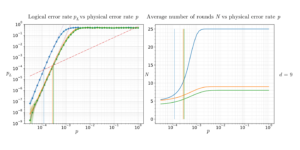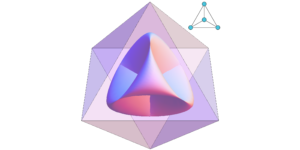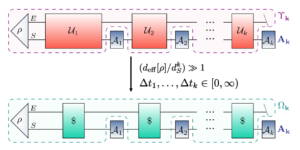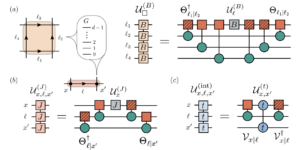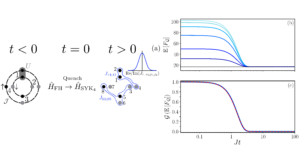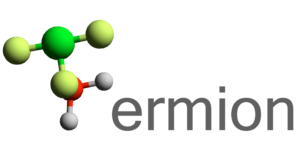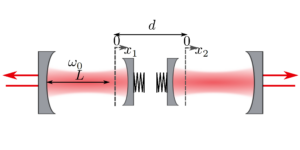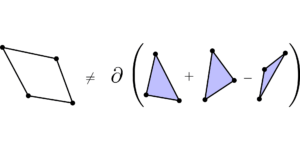1ICFO – Institut de Ciencies Fotoniques, The Barcelona Institute of Science and Technology, 08860 Castelldefels (Barcelona), Spain
2Perimeter Institute for Theoretical Physics, 31 Caroline St. N., Waterloo, Ontario, Canada, N2L 2Y5
3Instituto de Ciencias Matemáticas (CSIC-UAM-UC3M-UCM), 28049 Madrid, Spain
Find this paper interesting or want to discuss? Scite or leave a comment on SciRate.
Abstract
We introduce Inflation, a Python library for assessing whether an observed probability distribution is compatible with a causal explanation. This is a central problem in both theoretical and applied sciences, which has recently witnessed significant advances from the area of quantum nonlocality, namely, in the development of inflation techniques. Inflation is an extensible toolkit that is capable of solving pure causal compatibility problems and optimization over (relaxations of) sets of compatible correlations in both the classical and quantum paradigms. The library is designed to be modular and with the ability of being ready-to-use, while keeping an easy access to low-level objects for custom modifications.
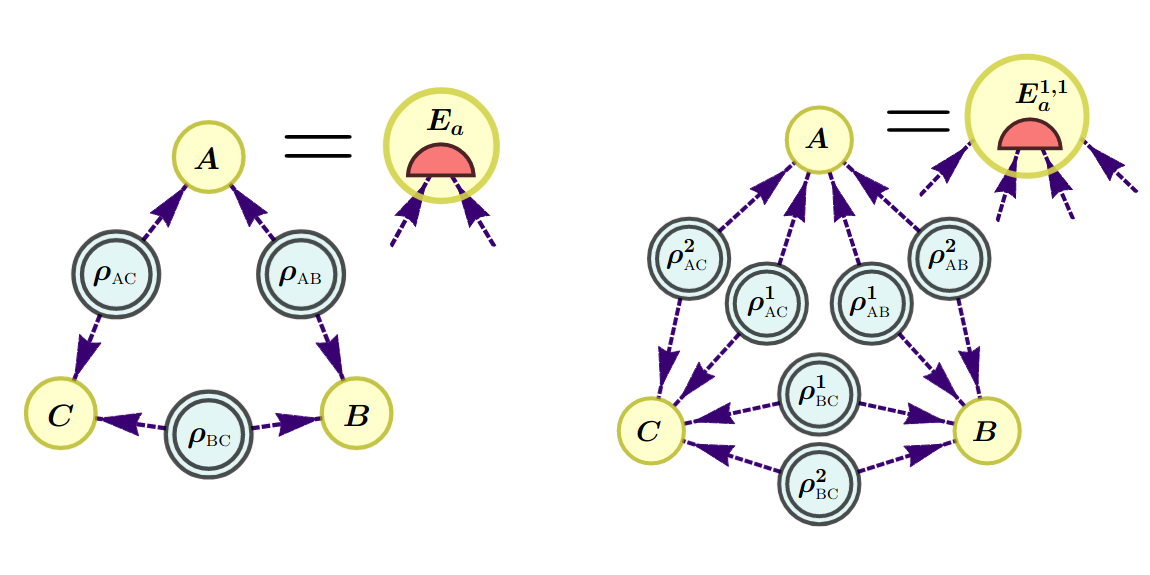
Featured image: Left: The triangle scenario, whereby the values of three visible random variables, $A$, $B$, and $C$, are influenced each by two different out of the three latent variables $rho_{AB}$, $rho_{BC}$ and $rho_{AC}$. These latent variables can be chosen to be either sources of shared randomness or of quantum states. Each party creates the value of their random variable by operating on the systems received, as in $E_a$. Answering whether a probability distribution over the values output by $A$, $B$ and $C$ is compatible with this structure is a numerically hard problem.
Right: The second-order quantum inflation of the triangle scenario. Inflation considers copies of the states and measurements as depicted. The use of copies of the original elements implies many symmetries, so distributions compatible with this scenario can be characterized via semidefinite programming.
Popular summary
► BibTeX data
► References
[1] Judea Pearl. ``Causality: Models, Reasoning, and Inference''. Cambridge University Press. (2009).
https://doi.org/10.1017/CBO9780511803161
[2] Dan Geiger and Christopher Meek. ``Quantifier elimination for statistical problems''. In Proc. 15th Conf. Uncert. Artif. Intell. (AUAI, 1999). Page 226–235. (1995). arXiv:1301.6698.
https://doi.org/10.48550/arXiv.1301.6698
arXiv:1301.6698
[3] Jin Tian and Judea Pearl. ``On the testable implications of causal models with hidden variables''. In Proc. 18th Conf. Uncert. Artif. Intell. (AUAI, 2002). Page 519–527. (2002). arXiv:1301.0608.
https://doi.org/10.48550/arXiv.1301.0608
arXiv:1301.0608
[4] Luis David Garcia, Michael Stillman, and Bernd Sturmfels. ``Algebraic geometry of Bayesian networks''. J. Symb. Comput. 39, 331–355 (2005). arXiv:math/0301255.
https://doi.org/10.1016/j.jsc.2004.11.007
arXiv:math/0301255
[5] Luis David Garcia. ``Algebraic statistics in model selection''. In Proc. 20th Conf. Uncert. Artif. Intell. (AUAI, 2004). Page 177–184. (2014). arXiv:1207.4112.
https://doi.org/10.48550/arXiv.1207.4112
arXiv:1207.4112
[6] Ciarán M. Lee and Robert W. Spekkens. ``Causal inference via algebraic geometry: Feasibility tests for functional causal structures with two binary observed variables''. J. Causal Inference 5, 20160013 (2017). arXiv:1506.03880.
https://doi.org/10.1515/jci-2016-0013
arXiv:1506.03880
[7] Nicolas Brunner, Daniel Cavalcanti, Stefano Pironio, Valerio Scarani, and Stephanie Wehner. ``Bell nonlocality''. Rev. Mod. Phys. 86, 419–478 (2014). arXiv:1303.2849.
https://doi.org/10.1103/RevModPhys.86.419
arXiv:1303.2849
[8] John S. Bell. ``On the Einstein-Podolsky-Rosen paradox''. Physics Physique Fizika 1, 195–200 (1964).
https://doi.org/10.1103/PhysicsPhysiqueFizika.1.195
[9] Christopher J. Wood and Robert W. Spekkens. ``The lesson of causal discovery algorithms for quantum correlations: causal explanations of Bell-inequality violations require fine-tuning''. New J. Phys. 17, 033002 (2015). arXiv:1208.4119.
https://doi.org/10.1088/1367-2630/17/3/033002
arXiv:1208.4119
[10] Rafael Chaves, Richard Kueng, Jonatan B. Brask, and David Gross. ``Unifying framework for relaxations of the causal assumptions in Bell's theorem''. Phys. Rev. Lett. 114, 140403 (2015). arXiv:1411.4648.
https://doi.org/10.1103/PhysRevLett.114.140403
arXiv:1411.4648
[11] Cyril Branciard, Nicolas Gisin, and Stefano Pironio. ``Characterizing the nonlocal correlations created via entanglement swapping''. Phys. Rev. Lett. 104, 170401 (2010). arXiv:0911.1314.
https://doi.org/10.1103/PhysRevLett.104.170401
arXiv:0911.1314
[12] Cyril Branciard, Denis Rosset, Nicolas Gisin, and Stefano Pironio. ``Bilocal versus nonbilocal correlations in entanglement-swapping experiments''. Phys. Rev. A 85, 032119 (2012). arXiv:1112.4502.
https://doi.org/10.1103/PhysRevA.85.032119
arXiv:1112.4502
[13] Tobias Fritz. ``Beyond Bell's theorem: correlation scenarios''. New J. Phys. 14, 103001 (2012). arXiv:1206.5115.
https://doi.org/10.1088/1367-2630/14/10/103001
arXiv:1206.5115
[14] Thomas C. Fraser and Elie Wolfe. ``Causal compatibility inequalities admitting quantum violations in the triangle structure''. Phys. Rev. A 98, 022113 (2018). arXiv:1709.06242.
https://doi.org/10.1103/PhysRevA.98.022113
arXiv:1709.06242
[15] Thomas van Himbeeck, Jonatan Bohr Brask, Stefano Pironio, Ravishankar Ramanathan, Ana Belén Sainz, and Elie Wolfe. ``Quantum violations in the Instrumental scenario and their relations to the Bell scenario''. Quantum 3, 186 (2019). arXiv:1804.04119.
https://doi.org/10.22331/q-2019-09-16-186
arXiv:1804.04119
[16] Armin Tavakoli, Alejandro Pozas-Kerstjens, Ming-Xing Luo, and Marc-Olivier Renou. ``Bell nonlocality in networks''. Rep. Prog. Phys. 85, 056001 (2022). arXiv:2104.10700.
https://doi.org/10.1088/1361-6633/ac41bb
arXiv:2104.10700
[17] Alejandro Pozas-Kerstjens, Rafael Rabelo, Łukasz Rudnicki, Rafael Chaves, Daniel Cavalcanti, Miguel Navascués, and Antonio Acín. ``Bounding the sets of classical and quantum correlations in networks''. Phys. Rev. Lett. 123, 140503 (2019). arXiv:1904.08943.
https://doi.org/10.1103/PhysRevLett.123.140503
arXiv:1904.08943
[18] Aditya Kela, Kai Von Prillwitz, Johan Åberg, Rafael Chaves, and David Gross. ``Semidefinite tests for latent causal structures''. IEEE Trans. Inf. Theory 66, 339–349 (2020). arXiv:1701.00652.
https://doi.org/10.1109/TIT.2019.2935755
arXiv:1701.00652
[19] Johan Åberg, Ranieri Nery, Cristhiano Duarte, and Rafael Chaves. ``Semidefinite tests for quantum network topologies''. Phys. Rev. Lett. 125, 110505 (2020). arXiv:2002.05801.
https://doi.org/10.1103/PhysRevLett.125.110505
arXiv:2002.05801
[20] Ming-Xing Luo. ``Computationally efficient nonlinear Bell inequalities for quantum networks''. Phys. Rev. Lett. 120, 140402 (2018). arXiv:1707.09517.
https://doi.org/10.1103/PhysRevLett.120.140402
arXiv:1707.09517
[21] Marc-Olivier Renou, Yuyi Wang, Sadra Boreiri, Salman Beigi, Nicolas Gisin, and Nicolas Brunner. ``Limits on correlations in networks for quantum and no-signaling resources''. Phys. Rev. Lett. 123, 070403 (2019). arXiv:1901.08287.
https://doi.org/10.1103/PhysRevLett.123.070403
arXiv:1901.08287
[22] Elie Wolfe, Robert W. Spekkens, and Tobias Fritz. ``The inflation technique for causal inference with latent variables''. J. Causal Inference 7, 20170020 (2019). arXiv:1609.00672.
https://doi.org/10.1515/jci-2017-0020
arXiv:1609.00672
[23] Elie Wolfe, Alejandro Pozas-Kerstjens, Matan Grinberg, Denis Rosset, Antonio Acín, and Miguel Navascués. ``Quantum inflation: A general approach to quantum causal compatibility''. Phys. Rev. X 11, 021043 (2021). arXiv:1909.10519.
https://doi.org/10.1103/PhysRevX.11.021043
arXiv:1909.10519
[24] Nicolas Gisin, Jean-Daniel Bancal, Yu Cai, Patrick Remy, Armin Tavakoli, Emmanuel Zambrini Cruzeiro, Sandu Popescu, and Nicolas Brunner. ``Constraints on nonlocality in networks from no-signaling and independence''. Nat. Commun. 11, 2378 (2020). arXiv:1906.06495.
https://doi.org/10.1038/s41467-020-16137-4
arXiv:1906.06495
[25] Alejandro Pozas-Kerstjens, Nicolas Gisin, and Armin Tavakoli. ``Full network nonlocality''. Phys. Rev. Lett. 128, 010403 (2022). arXiv:2105.09325.
https://doi.org/10.1103/PhysRevLett.128.010403
arXiv:2105.09325
[26] Alejandro Pozas-Kerstjens, Nicolas Gisin, and Marc-Olivier Renou. ``Proofs of network quantum nonlocality in continuous families of distributions''. Phys. Rev. Lett. 130, 090201 (2023). arXiv:2203.16543.
https://doi.org/10.1103/PhysRevLett.130.090201
arXiv:2203.16543
[27] Emanuel-Cristian Boghiu, Elie Wolfe, and Alejandro Pozas-Kerstjens. ``Source code for inflation''. Zenodo 7305544 (2022).
https://doi.org/10.5281/zenodo.7305544
[28] Flavio Baccari, Daniel Cavalcanti, Peter Wittek, and Antonio Acín. ``Efficient device-independent entanglement detection for multipartite systems''. Phys. Rev. X 7, 021042 (2017). arXiv:1612.08551.
https://doi.org/10.1103/PhysRevX.7.021042
arXiv:1612.08551
[29] Greg ver Steeg and Aram Galstyan. ``A sequence of relaxations constraining hidden variable models''. In Proceedings of the Twenty-Seventh Conference on Uncertainty in Artificial Intelligence. Page 717–726. UAI'11Arlington, Virginia, USA (2011). AUAI Press. arXiv:1106.1636.
https://doi.org/10.48550/arXiv.1106.1636
arXiv:1106.1636
[30] Miguel Navascués and Elie Wolfe. ``The inflation technique completely solves the causal compatibility problem''. J. Causal Inference 8, 70 – 91 (2020). arXiv:1707.06476.
https://doi.org/10.1515/jci-2018-0008
arXiv:1707.06476
[31] Laurens T. Ligthart and David Gross. ``The inflation hierarchy and the polarization hierarchy are complete for the quantum bilocal scenario'' (2022). arXiv:2212.11299.
arXiv:2212.11299
[32] Laurens T. Ligthart, Mariami Gachechiladze, and David Gross. ``A convergent inflation hierarchy for quantum causal structures'' (2021). arXiv:2110.14659.
arXiv:2110.14659
[33] Charles R. Harris, K. Jarrod Millman, Stéfan J. van der Walt, et al. ``Array programming with NumPy''. Nature 585, 357–362 (2020).
https://doi.org/10.1038/s41586-020-2649-2
[34] Aaron Meurer, Christopher P. Smith, Mateusz Paprocki, et al. ``SymPy: symbolic computing in Python''. PeerJ Comput. Sci. 3, e103 (2017).
https://doi.org/10.7717/peerj-cs.103
[35] Pauli Virtanen, Ralf Gommers, Travis E. Oliphant, et al. ``SciPy 1.0: Fundamental Algorithms for Scientific Computing in Python''. Nat. Methods 17, 261–272 (2020).
https://doi.org/10.1038/s41592-019-0686-2
[36] Siu Kwan Lam, Antoine Pitrou, and Stanley Seibert. ``Numba: A LLVM-based Python JIT compiler''. In Proceedings of the Second Workshop on the LLVM Compiler Infrastructure in HPC. LLVM '15 New York, NY, USA (2015). Association for Computing Machinery.
https://doi.org/10.1145/2833157.2833162
[37] MOSEK ApS. ``MOSEK Fusion API for Python''. https://docs.mosek.com/latest/pythonfusion/index.html (2019).
https://docs.mosek.com/latest/pythonfusion/index.html
[38] Johann Löfberg. ``YALMIP: A toolbox for modeling and optimization in MATLAB''. In Proceedings of the CACSD Conference. Taipei, Taiwan (2004). url: yalmip.github.io/.
https://yalmip.github.io/
[39] Miguel Navascués, Stefano Pironio, and Antonio Acín. ``Bounding the set of quantum correlations''. Phys. Rev. Lett. 98, 010401 (2007). arXiv:quant-ph/0607119.
https://doi.org/10.1103/PhysRevLett.98.010401
arXiv:quant-ph/0607119
[40] Miguel Navascués, Stefano Pironio, and Antonio Acín. ``A convergent hierarchy of semidefinite programs characterizing the set of quantum correlations''. New J. Phys. 10, 073013 (2008). arXiv:0803.4290.
https://doi.org/10.1088/1367-2630/10/7/073013
arXiv:0803.4290
[41] Stefano Pironio, Miguel Navascués, and Antonio Acín. ``Convergent relaxations of polynomial optimization problems with non-commuting variables''. SIAM J. Optim. 20, 2157–2180 (2010). arXiv:0903.4368.
https://doi.org/10.1137/090760155
arXiv:0903.4368
[42] Tobias Moroder, Jean-Daniel Bancal, Yeong-Cherng Liang, Martin Hofmann, and Otfried Gühne. ``Device-independent entanglement quantification and related applications''. Phys. Rev. Lett. 111, 030501 (2013). arXiv:1302.1336.
https://doi.org/10.1103/PhysRevLett.111.030501
arXiv:1302.1336
[43] Alejandro Pozas-Kerstjens. ``Quantum information outside quantum information''. PhD thesis. Universitat Politécnica de Catalunya. (2019). url: http://hdl.handle.net/10803/667696.
http://hdl.handle.net/10803/667696
[44] N. David Mermin. ``Quantum mysteries revisited''. Amer. J. Phys. 58, 731–734 (1990).
https://doi.org/10.1119/1.16503
[45] Paolo Abiuso, Tamás Kriváchy, Emanuel-Cristian Boghiu, Marc-Olivier Renou, Alejandro Pozas-Kerstjens, and Antonio Acín. ``Single-photon nonlocality in quantum networks''. Phys. Rev. Research 4, L012041 (2022). arXiv:2108.01726.
https://doi.org/10.1103/PhysRevResearch.4.L012041
arXiv:2108.01726
[46] Mariami Gachechiladze, Nikolai Miklin, and Rafael Chaves. ``Quantifying causal influences in the presence of a quantum common cause''. Phys. Rev. Lett. 125, 230401 (2020). arXiv:2007.01221.
https://doi.org/10.1103/PhysRevLett.125.230401
arXiv:2007.01221
[47] Iris Agresti, Davide Poderini, Leonardo Guerini, Michele Mancusi, Gonzalo Carvacho, Leandro Aolita, Daniel Cavalcanti, Rafael Chaves, and Fabio Sciarrino. ``Experimental device-independent certified randomness generation with an instrumental causal structure''. Commun. Phys. 3, 110 (2020). arXiv:1905.02027.
https://doi.org/10.1038/s42005-020-0375-6
arXiv:1905.02027
[48] Iris Agresti, Davide Poderini, Beatrice Polacchi, Nikolai Miklin, Mariami Gachechiladze, Alessia Suprano, Emanuele Polino, Giorgio Milani, Gonzalo Carvacho, Rafael Chaves, and Fabio Sciarrino. ``Experimental test of quantum causal influences''. Sci. Adv. 8, eabm1515 (2022). arXiv:2108.08926.
https://doi.org/10.1126/sciadv.abm1515
arXiv:2108.08926
[49] Shane Mansfield and Tobias Fritz. ``Hardy's non-locality paradox and possibilistic conditions for non-locality''. Found. Phys. 42, 709–719 (2012). arXiv:1105.1819.
https://doi.org/10.1007/s10701-012-9640-1
arXiv:1105.1819
[50] Denis Rosset, Felipe Montealegre-Mora, and Jean-Daniel Bancal. ``RepLAB: A computational/numerical approach to representation theory''. In Quantum Theory and Symmetries. Pages 643–653. CRM Series in Mathematical Physics. Proceedings of the 11th International Symposium, Montreal, Springer (2021). arXiv:1911.09154.
https://doi.org/10.1007/978-3-030-55777-5_60
arXiv:1911.09154
[51] Kim-Chuan Toh, Michael J. Todd, and Reha H. Tütüncü. ``SDPT3 — a MATLAB software package for semidefinite programming''. Optim. Metods Softw. 11, 545–581 (1999).
https://doi.org/10.1080/10556789908805762
[52] Steven Diamond and Stephen Boyd. ``CVXPY: A Python-embedded modeling language for convex optimization''. J. Mach. Learn. Res. 17, 1–5 (2016). arXiv:1603.00943.
https://doi.org/10.48550/arXiv.1603.00943
arXiv:1603.00943
[53] Brendan O'Donoghue, Eric Chu, Neal Parikh, and Stephen Boyd. ``SCS: Splitting Conic Solver''. https://github.com/cvxgrp/scs (2021).
https://github.com/cvxgrp/scs
[54] Gurobi Optimization, LLC. ``Gurobi Optimizer Reference Manual''. https://www.gurobi.com (2022).
https://www.gurobi.com
[55] Guillaume Sagnol and Maximilian Stahlberg. ``PICOS: A Python interface to conic optimization solvers''. J. Open Source Softw. 7, 3915 (2022).
https://doi.org/10.21105/joss.03915
[56] Martin S. Andersen, Joachim Dahl, and Lieven Vandenberghe. ``CVXOPT: Python software for convex optimization''. http://cvxopt.org/ (2015).
http://cvxopt.org/
[57] Daniel Brosch and Etienne de Klerk. ``Jordan symmetry reduction for conic optimization over the doubly nonnegative cone: theory and software''. Optim. Methods Softw. 37, 2001–2020 (2022). arXiv:2001.11348.
https://doi.org/10.1080/10556788.2021.2022146
arXiv:2001.11348
Cited by
[1] Robin Lorenz and Sean Tull, "Causal models in string diagrams", arXiv:2304.07638, (2023).
The above citations are from SAO/NASA ADS (last updated successfully 2023-05-05 01:00:09). The list may be incomplete as not all publishers provide suitable and complete citation data.
On Crossref's cited-by service no data on citing works was found (last attempt 2023-05-05 01:00:08).
This Paper is published in Quantum under the Creative Commons Attribution 4.0 International (CC BY 4.0) license. Copyright remains with the original copyright holders such as the authors or their institutions.
- SEO Powered Content & PR Distribution. Get Amplified Today.
- PlatoAiStream. Web3 Data Intelligence. Knowledge Amplified. Access Here.
- Minting the Future w Adryenn Ashley. Access Here.
- Buy and Sell Shares in PRE-IPO Companies with PREIPO®. Access Here.
- Source: https://quantum-journal.org/papers/q-2023-05-04-996/
- :has
- :is
- :not
- ][p
- 1
- 10
- 11
- 110
- 12
- 13
- 14
- 15%
- 195
- 1999
- 20
- 2001
- 2011
- 2012
- 2014
- 2015
- 2016
- 2017
- 2018
- 2019
- 2020
- 2021
- 2022
- 2023
- 22
- 23
- 24
- 26
- 27
- 28
- 30
- 39
- 40
- 49
- 50
- 66
- 7
- 70
- 8
- 9
- 91
- 98
- a
- Aaron
- ability
- above
- ABSTRACT
- access
- advances
- affiliations
- against
- AL
- algorithms
- All
- allow
- an
- Ana
- and
- Andersen
- answer
- api
- appeared
- applications
- applied
- approach
- ARE
- AREA
- artificial
- artificial intelligence
- AS
- Assessing
- Association
- author
- authors
- barcelona
- Bayesian
- BE
- Beatrice
- behind
- being
- Bell
- both
- Break
- but
- by
- called
- cambridge
- CAN
- Canada
- capable
- Cause
- causes
- central
- Certified
- challenges
- characterized
- Charles
- chosen
- Christopher
- code
- COM
- comment
- Common
- Commons
- compatibility
- compatible
- complete
- completely
- computing
- conditions
- Conference
- considers
- continuous
- Convex
- copies
- copyright
- Correlation
- created
- creates
- CRM
- custom
- Daniel
- data
- David
- Den
- designed
- Detection
- Development
- diagrams
- Diamond
- different
- discovery
- discuss
- Disease
- distribution
- distributions
- does
- doubly
- e
- E&T
- each
- easy
- Effective
- efficient
- either
- elements
- encourage
- Ether (ETH)
- experiments
- explanation
- families
- field
- For
- found
- Framework
- from
- functional
- fundamental
- fusion
- General
- generation
- geometry
- GitHub
- gross
- handle
- Hard
- harvard
- Have
- Hidden
- hierarchy
- holders
- hpc
- HTML
- http
- HTTPS
- identifying
- IEEE
- image
- implements
- implications
- in
- independence
- inequalities
- inflation
- influenced
- information
- Infrastructure
- Institute
- institutions
- instrumental
- Intelligence
- interesting
- Interface
- International
- introduce
- JavaScript
- JIT
- John
- journal
- keeping
- Lam
- language
- Last
- LEARN
- Leave
- Lee
- left
- lesson
- Library
- License
- List
- LLC
- machinery
- Main
- manual
- many
- Martin
- mathematical
- max-width
- May..
- measurements
- methods
- Michael
- model
- modeling
- models
- Modifications
- modular
- Month
- Montreal
- namely
- Nature
- network
- networks
- New
- New York
- Nicolas
- no
- numpy
- NY
- objects
- of
- often
- on
- ones
- Ontario
- open
- open source
- operating
- optimization
- or
- original
- out
- output
- outside
- over
- package
- page
- Paolo
- Paper
- Paradox
- party
- Peter
- Physics
- plato
- Plato Data Intelligence
- PlatoData
- presence
- present
- press
- probability
- Problem
- problems
- PROC
- Proceedings
- Programming
- Programs
- provide
- published
- publisher
- publishers
- Python
- Quantum
- quantum information
- quantum networks
- Questions
- Rafael
- raising
- Ralf
- random
- randomness
- received
- recently
- reduction
- references
- related
- relations
- Relax
- remains
- representation
- require
- research
- Resources
- Richard
- ROBERT
- Robin
- s
- salaries
- scenario
- scenarios
- SCI
- Science
- Science and Technology
- SCIENCES
- Sean
- Second
- selection
- Sequence
- Series
- set
- Sets
- shared
- siam
- significant
- So
- Software
- Solves
- Solving
- some
- Source
- Sources
- Spending
- stanley
- States
- statistical
- statistics
- Stephen
- String
- structure
- Successfully
- such
- suitable
- Symposium
- Systems
- Taiwan
- techniques
- Technology
- test
- tests
- that
- The
- The Area
- their
- theoretical
- These
- thesis
- this
- three
- Title
- to
- Toolbox
- toolkit
- tools
- two
- Uncertainty
- under
- university
- updated
- URL
- USA
- use
- using
- Vaccine
- value
- Values
- Versus
- via
- Violations
- virginia
- visible
- volume
- von
- W
- want
- was
- we
- whether
- which
- while
- with
- witnessed
- wood
- Work
- works
- workshop
- X
- year
- york
- zephyrnet

